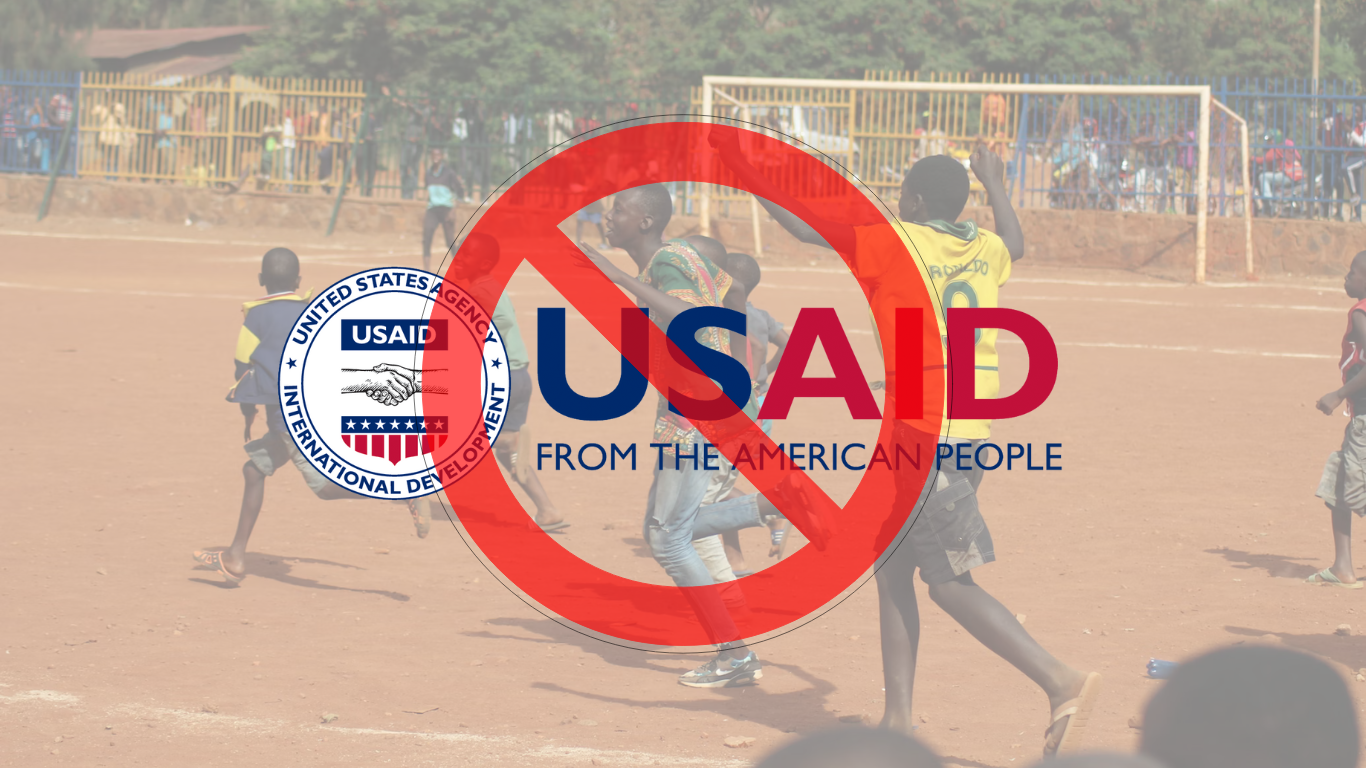Donald Trump's recent decision to freeze USAID funds has significantly impacted international cooperation, including the financing of sports projects with social impact. Although USAID has used sport as a development tool in vulnerable regions, its contractor-based funding model and lack of transparency have limited its effectiveness. This entry looks at how the withdrawal of these funds will affect the aid industry and the sports system. Who will fill the void left by USAID, and what implications will this have for the future of sport and international cooperation?
Former U.S. President Donald Trump’s decision to freeze funds allocated to the United States Agency for International Development (USAID) has had a significant impact on international cooperation. Since its founding in 1961, USAID has been central in financing humanitarian assistance, economic development, and institutional strengthening across various regions.
While USAID has been a crucial force in global development, its operational model has been marked by opacity, inefficiency, and the concentration of funds in private contractors rather than directly reaching beneficiary communities. An article by Susan Roberts uses Actor-Network Theory (ANT) to clarify that USAID should not be seen merely as a bureaucratic entity but as a network of relationships involving contractors, governments, think tanks, and NGOs, where the agency acts as a hub that redistributes capital, influence, and political access. This perspective helps us understand how USAID has evolved from a development assistance agency into a complex system of interconnected interests.
This article examines the impact of USAID’s withdrawal on sports project funding, the structure of the aid industry, and the transparency challenges that have characterized its operations.
The Origins and Evolution of USAID
USAID was established in 1961 under the administration of John F. Kennedy during the Cold War, with the goal of consolidating U.S. global influence through economic assistance and development. Its official mission was to reduce poverty and promote stability, but in practice, its role has been closely tied to Washington’s strategic interests.
Over the years, USAID moved away from directly implementing its projects and became increasingly dependent on a network of private contractors, both for-profit and non-profit. This transformation positioned USAID as a key player in the international aid industry, fostering relationships with corporations, consultancies, and think tanks that have captured a significant portion of its funds.
USAID has oscillated between two contradictory models: One as a technical development agency focused on social assistance programs and another as an arm of US foreign policy, which conditions aid on alignment with Washington's interests.
This duality has hindered its transparency and effectiveness since it responds to development and geopolitical objectives that were not always aligned.
Despite being a government agency, USAID has historically lacked transparency in managing its funds. While it is legally bound by the Freedom of Information Act (FOIA) to provide access to its records, many of its contracts and audits remain difficult to obtain in practice. Investigations have shown that requests for information on specific projects are often denied or blocked under national security or contractual confidentiality claims.
The Rise of the International Aid Industry
USAID is one of the main drivers of the “aid industry,” a system where large for-profit and non-profit contractors have monopolized aid funds. This industry has five key attributes: Domination of private contractors; Most projects are not executed directly by USAID but by external companies. Concentration of funds: a small group of organizations receives the majority of resources. Opacity: It isn't easy to track the final destination of the funds. There is little accountability; External oversight of contracts is limited. Ineffectiveness in impact: many projects do not achieve verifiable results. Days ago, we had a conversation with Beatriz Mejía about the nature of USAID development projects, especially in areas such as sport for development and peace.
USAID and Sport: What Has Been Its Role?
While USAID has not played a dominant role in sports governance, it has used sports as a social development tool in various regions, particularly in countries affected by armed conflicts and humanitarian crises. Read this critical analysis on sports as a facilitator of development.
One of the most notable examples is USAID’s work in the Middle East and North Africa (MENA) region, where it has financed initiatives aimed at:
Fostering social inclusion for refugees and displaced populations through sports.
Reducing the risk of radicalization among youth exposed to violence.
Promoting women’s empowerment through sports programs in traditionally restrictive societies.
A blog post by sportanddev.org highlights that these programs have been critical in providing safe spaces in war-affected communities. However, their sustainability has relied entirely on continued international funding, particularly from USAID.
The Incentives Driving Economic Alternatives – North, East & West (IDEA-NEW) program, funded by USAID, aimed to improve stability in Afghanistan through economic and social initiatives, with sports playing a key role in youth empowerment. However, like other USAID projects, IDEA-NEW’s effectiveness was highly questionable.
Subsequent investigations revealed that much of the program’s budget never reached Afghan communities. Instead, funds remained in the hands of U.S. and Kabul-based contractors. The failure of IDEA-NEW to deliver a tangible impact on the ground illustrates a recurring pattern in the aid industry: programs designed with good intentions but poorly executed due to a lack of oversight and excessive contractor involvement.
In Colombia, the mismanagement that some leaders have given to USAID resources has been reported. Read in this post how the football resources are mismanaged.
Implications for the Sports System: Weakening of the SDP Ecosystem
We believe that the traditional sports system will not be affected by this funding freeze, as the main sources of financing for federated sports are governments and the families of young athletes. However, this decision will have significant repercussions on the funding of Sports for Development and Peace (SDP) programs. We highlight three types of initiatives, though this is not an exhaustive list:
Refugee integration projects in the Middle East and Africa have relied on USAID funding to provide sports infrastructure and community activities.
Women’s empowerment programs in societies with gender restrictions, where international cooperation has promoted access to sports for women.
Crime and violence prevention initiatives in Latin America have used sports to keep young people away from gangs and drug networks.
Without funding, many of these projects face the risk of disappearing or will have to seek alternative financing from the private sector or international organizations.
With USAID exiting SDP funding, other development actors will step in, such as:
Corporations and private sponsors may invest in these programs but with commercial or marketing interests that alter their original objectives.
Despite budget constraints, local governments and sports federations could take on more funding responsibility.
Organizations within and outside the sports system, such as FIFA or the United Nations, may try to fill part of the void left by USAID through new programs or special funds.
However, diversifying funding sources also brings challenges, such as:
The politicization of sports programs and the use of aid to influence elections for Executive Committees or Special Committees within organizations.
Lack of regulation over new donors, raising concerns about transparency.
One of the most concerning effects of the USAID funding freeze is that many vulnerable communities will lose access to sports opportunities. In many countries, internationally funded programs have been the only way for at-risk youth to participate in organized sports activities.
If these programs disappear without alternative funding, there is a risk that access to sports will become limited to those who can afford it, further widening the inequality gap.
The USAID funding freeze will have a profound impact on international cooperation and sports development funding. Although the agency has been criticized for its contractor-based financing model and lack of transparency, its withdrawal leaves a difficult-to-fill void.
In sports, USAID’s exit presents challenges for organizations reliant on these funds and the communities benefiting from them. The continuity of SDP programs focused on social integration, violence prevention, and youth empowerment will depend on other stakeholders' ability to take on effective funding roles.
This shift could create new opportunities for more transparent and decentralized cooperation models in the long term. Still, it could worsen structural issues if better participation and accountability mechanisms are not established.


